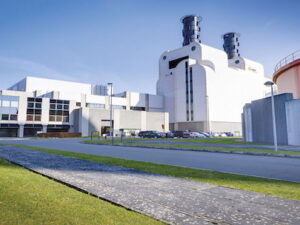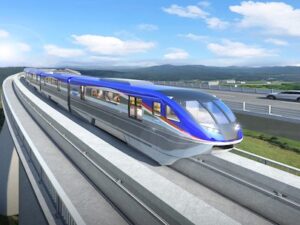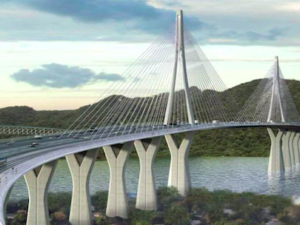Puente Industrial
Probabilistic Seismic Hazard Analysis of Puente Industrial
Seismic Hazard of the longest bridge of Chile, Puente Industrial
Facing the future construction of the Puente Industrial in Concepción (Region of Bio Bio, Chile), OHL CONSTRUCCION requested DYNAMIS ASSOCIATES to perform a Probabilistic Seismic Risk Analysis of the site.
Once built, it will be the longest bridge in Chile, constituting an engineering work of special relevance due to its structural singularity and the aggressive seismic and geological environment in which it is located. It will undoubtedly be a challenge for all the agencies involved in the project: MINISTRY OF CHILEAN PUBLIC WORKS, OHL CONSTRUCTION, OHL CONCESSIONS, APIA XXI, LOUIS BERGER, and DYNAMIS ASSOCIATES.
The recent seismic history of Chile is marked by the earthquake of El Maule (February 27, 2010), reaching a magnitude Mw 8.8. Its epicenter is in the subduction between the Nazca and South American plates in the Region of Bio Bio. The earthquake generated significant structural damages.
Our seismic risk analysis has been vital in evaluating the feasibility of the bridge and creating a safe design. We have been able to accurately evaluate the seismic load and thus to generate an adjusted, optimized, viable and safer structural design.
DYNAMIS mission
The study contemplated the identification and characterization of the seismogenic sources present in the area of influence. The individual effects as well as the combined actions of the seismogenic sources have been estimated by means of a probabilistic calculation, to determine its influence on the calculation of seismic hazards at the site of the bridge.
Starting from the seismicity reflected in the catalogs and calculating the time windows necessary to correctly represent events of a certain magnitude, we have determined the annual rate of exceedance for each magnitude and source. Subsequently, we established the maximum magnitudes of each source, constructing the statistical relationships necessary to estimate and evaluate the seismic hazard.
In order to obtain the design spectrum at the surface and taking into account the site effects, we performed a dynamic amplification analysis of the sand deposit (100 m thick) present in the study area. The result of the analysis led to a new concept of spectrum: “two peak response spectrum”.
Our Seismic Hazard Analysis was used to evaluate the viability of the project and to ensure a safe structural design. The study allowed to estimate the seismic loads accurately, which optimized the design.







